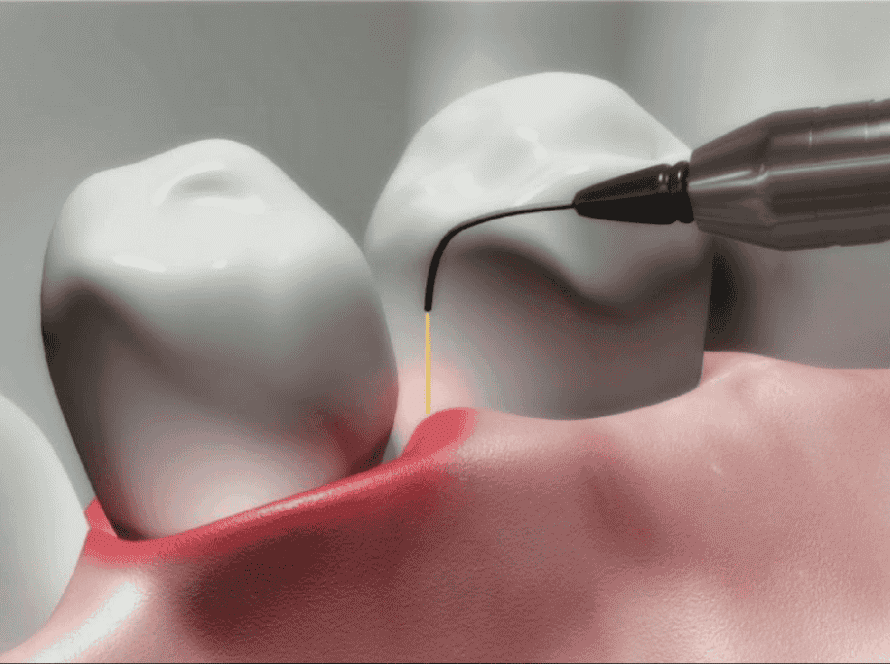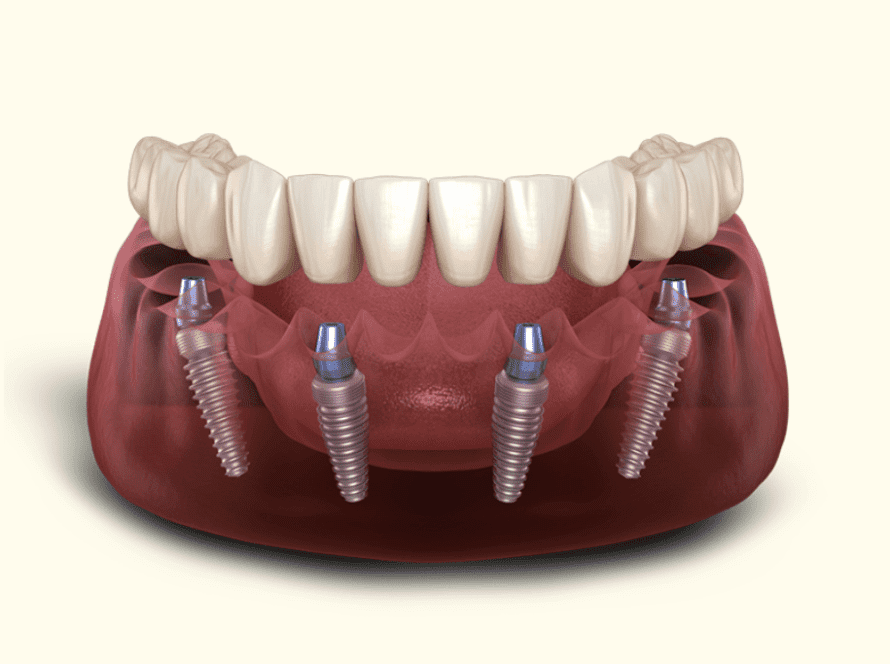Patients require crowns that function properly, look fantastic, and pose no health risks. Dentists also desire the same, and prefer dental crowns composed of materials robust enough to withstand bite forces without breaking. In many circumstances, zirconia crowns meet these requirements.
Nowadays, zirconia is a common crown material in dental offices, frequently replacing materials like gold or porcelain-fused-to-metal crowns. Dental crowns are caps that encase a tooth or dental implant. Dentists frequently suggest crowns to support malformed, damaged, or feeble teeth.
Dental crowns can also conceal severely discolored or worn-down teeth and strengthen several teeth in conjunction with bridges. Zirconia crowns are made of Zirconium dioxide which is a hard – ceramic substance.
What is the Zirconia Crown Made Of?
Zirconium dioxide is a hard ceramic substance used to make zirconia crowns. If the rear teeth are damaged zirconia crowns are generally suggested Crowns require harder materials to endure the pressure and wear that comes with time.
Reasons to Get a Zirconia Crown
Your teeth may break or deteriorate due to several reasons. The main causes of tooth deterioration are natural aging, dental decay, and trauma. Your teeth may become smaller or change their shape if you grind them down, have a crossbite, or chew on hard foods. Although a zirconia crown won’t restore your natural tooth to health, it will stop additional decay and enhance the damaged tooth’s appearance. A dental crown can be used by your dentist to treat various oral issues. The most typical ones are:
- Preserving a weak tooth from breaking
- preserving a tooth in its unhealthy state
- enhancing the appearance of your smile
- repairing a chipped or damaged tooth
- Improving yourbite
- covering root canals, dental implants, and big fillings
- covering malformed teeth
At Fort Lauderdale Dental Aesthetic Center near me, we offer prosthetic care at affordable prices using every dental crown currently on the market.
Caps called dental crowns are used to cover broken teeth. When fillings cannot correct a tooth’s condition, crowns are used to cover, protect, and restore the tooth’s shape. Dental crowns may be constructed from:
- Zirconia (Ceramic)
- E-Max (Lithium Disilicate Crowns)
- Porcelain
- Metal (PFM).
Benefits of Getting a Zirconia Crown
Zirconia is the strongest monolithic ceramic, that is, ceramic created without the addition of additional materials. It is stronger, stiffer, and more split-resistant than glass ceramics and dental composite. These characteristics prevent the tooth beneath the crown and the neighboring teeth from chipping and shattering. Because of zirconia’s superior shielding ability, heavier loads won’t compromise your smile’s integrity.
Different Types of Zirconia Crowns
Zirconium dental crowns have several applications in restorative and cosmetic dentistry. They are an excellent method of reinforcing a fractured or cracked tooth, covering a discolored or stained tooth, or restoring the aesthetics of a dental implant. Dental caps are becoming increasingly in demand because of their amazing quality and longevity.
Zirconia monolithic crowns
Zirconium oxide, a component of dental ceramics, gives them almost indestructible properties. Chips, cracks, and stains cannot penetrate this strong ceramic.
It is somewhat opaque, but it can be tinted to match the tooth color. Generally monolithic Zirconia crowns are recommended for the back of the jaw.
Cad cam milling is used to build monolithic restorations, and large machines use digital files created by technicians to create these works of art.
Smaller boutique dental labs must buy these milling machines since they are typically only available to large production dental labs. –
Zirconium crowns with layers
As the name suggests, these restorations are made by layering lithium disilicate clay on top of ceramic coping. The multilayer porcelains provide restorations usually for the front teeth since they appear the most aesthetic and appear very real and natural.- The top ceramic layer is made in the same manner as the EMAX (metal-free, versatile, high-strength) variants of IPS.
They have layers of soft, reflecting porcelain covering solid cores. The ceramist’s technique determines the strength and beauty of the cap, and a talented ceramist can produce breathtaking restorations.
Compared to PFM crowns, the crown’s layers are more susceptible to chipping. Hence, they are better suited for front teeth that don’t bear the forces of chewing and grinding food. –
Zirconia Crowns Advantages
There are numerous ways that this dental option can improve your -smile, regardless of the kind of zirconia you -choose for their crowns. The three main benefits of zirconia crowns are as follows:
- Crowns made of zirconia are biocompatible. Because of this, your patients won’t have to worry about their zirconia crowns adversely reacting with the living tissue in their mouths. Zirconia is hypoallergenic and non-toxic.
- Zirconia crowns are customized. Because of its chemical makeup and the variety of methods created to work with it, zirconia is a material that can be made to order. This implies that it is now more possible to construct zirconia crowns with a particular patient’s needs in mind. This helps guarantee a precise fit and comfort that lasts for your patients.
- Zirconia crowns don’t include any metal. Since zirconia crowns are metal-free, they are ideal for those allergic to nickel or with other metal sensitivities.
- Zirconia crowns work well with digital devices. Modern dental technology has made it possible to construct zirconia crowns fully digitally. To begin, you can take a digital impression. The crowns are then precisely machined after being digitally created using CAD/CAM technology, reducing the amount of chairside changes needed for seating.
- Cementing a zirconia crown is simple. Although zirconia crowns are cemented differently than other ceramic crowns, the procedure can be more straightforward and effective.
How Long Will a Zirconia Crown Last?
When taken care of, dental crowns often last five to fifteen years. Your dental hygiene and other personal behaviors will determine how long they last. For instance, you may require a replacement more quickly – if you grind your teeth while you sleep. Additional actions that shorten the life of your zirconia crown include:
- Chewing ice
- Opening packages with your teeth
- Biting your nails
- Bad hygiene
Advancements in restorative dental materials enable considerably more effective procedures with more durable outcomes. If placed properly, a zirconia crown can quickly and significantly enhance overall oral health.
Generally speaking, zirconia crowns are more expensive than porcelain, metal, and ceramic crowns. Their price ranges from $1000 to $2,500-. Geographical factors may also influence the cost.
Fort Lauderdale Denta Aesthetic Center
At Fort Lauderdale Dental Aesthetic Center, we proudly offer top-tier dental solutions, including our advanced Zirconia Crowns. Zirconia Crowns are renowned for their exceptional durability, biocompatibility, and natural appearance, making them an ideal choice for patients seeking functionality and aesthetics in their dental restorations.
Zirconia, a high-strength ceramic, mimics the translucency of natural teeth while providing unmatched strength, significantly reducing the risk of chipping or cracking. This makes Zirconia Crowns particularly suitable for restoring molars and other teeth subjected to high biting forces. Additionally, Zirconia’s biocompatible nature ensures that it is well-tolerated by the gums, minimizing the risk of allergic reactions or gum irritation.
Our skilled dental specialists use state-of-the-art technology to custom design each Zirconia Crown, ensuring a perfect fit and seamless integration with your existing teeth. The precise craftsmanship and attention to detail guarantee that your new crown will blend harmoniously with your natural smile, enhancing both function and aesthetics.





